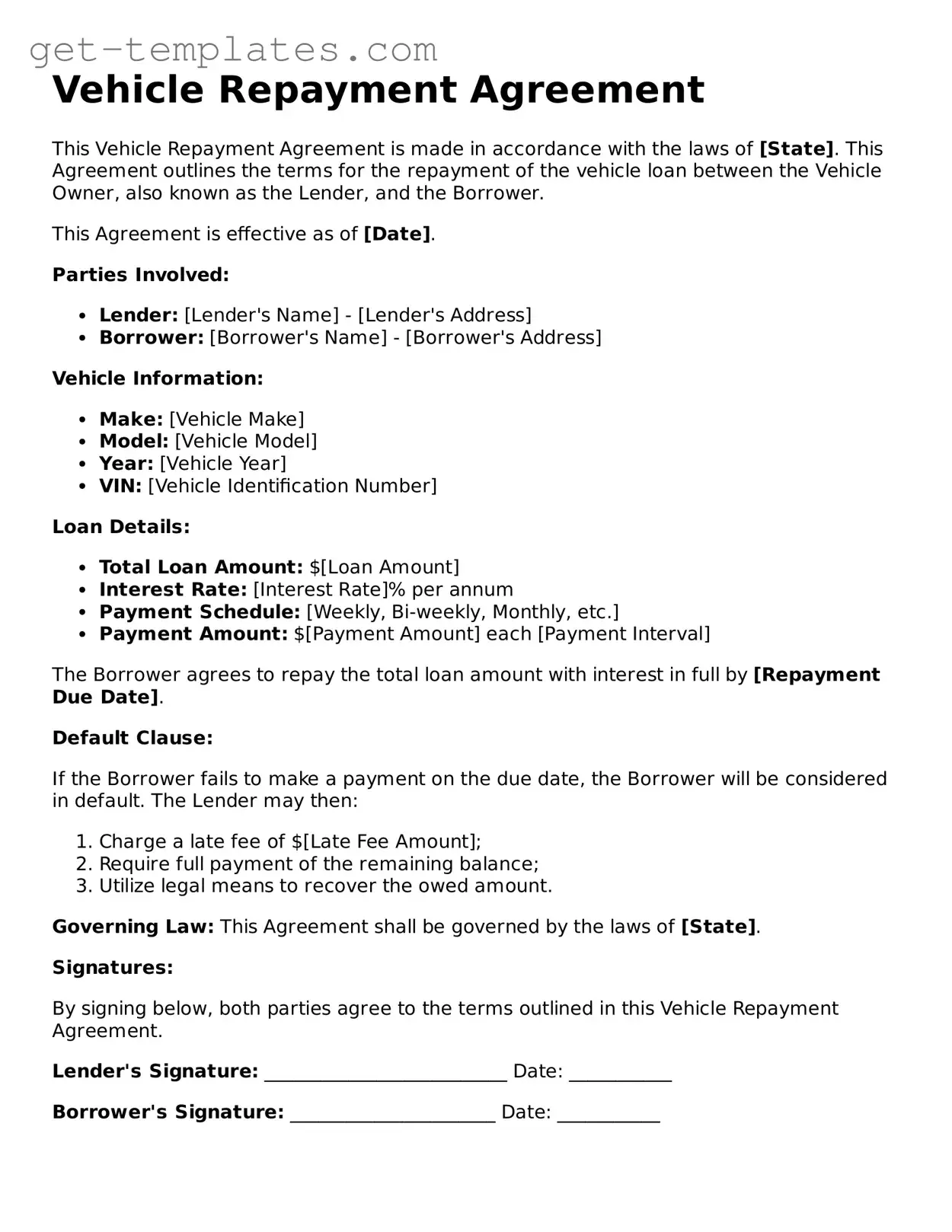Vehicle Repayment Agreement
This Vehicle Repayment Agreement is made in accordance with the laws of [State]. This Agreement outlines the terms for the repayment of the vehicle loan between the Vehicle Owner, also known as the Lender, and the Borrower.
This Agreement is effective as of [Date].
Parties Involved:
- Lender: [Lender's Name] - [Lender's Address]
- Borrower: [Borrower's Name] - [Borrower's Address]
Vehicle Information:
- Make: [Vehicle Make]
- Model: [Vehicle Model]
- Year: [Vehicle Year]
- VIN: [Vehicle Identification Number]
Loan Details:
- Total Loan Amount: $[Loan Amount]
- Interest Rate: [Interest Rate]% per annum
- Payment Schedule: [Weekly, Bi-weekly, Monthly, etc.]
- Payment Amount: $[Payment Amount] each [Payment Interval]
The Borrower agrees to repay the total loan amount with interest in full by [Repayment Due Date].
Default Clause:
If the Borrower fails to make a payment on the due date, the Borrower will be considered in default. The Lender may then:
- Charge a late fee of $[Late Fee Amount];
- Require full payment of the remaining balance;
- Utilize legal means to recover the owed amount.
Governing Law: This Agreement shall be governed by the laws of [State].
Signatures:
By signing below, both parties agree to the terms outlined in this Vehicle Repayment Agreement.
Lender's Signature: __________________________ Date: ___________
Borrower's Signature: ______________________ Date: ___________
